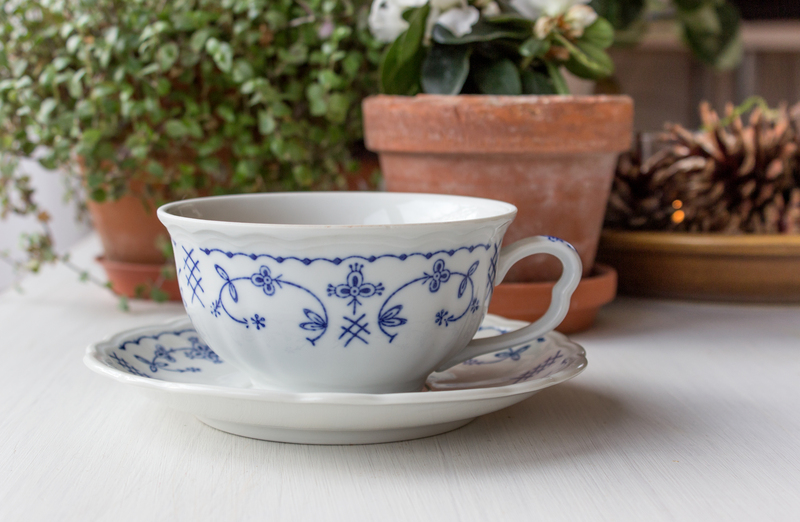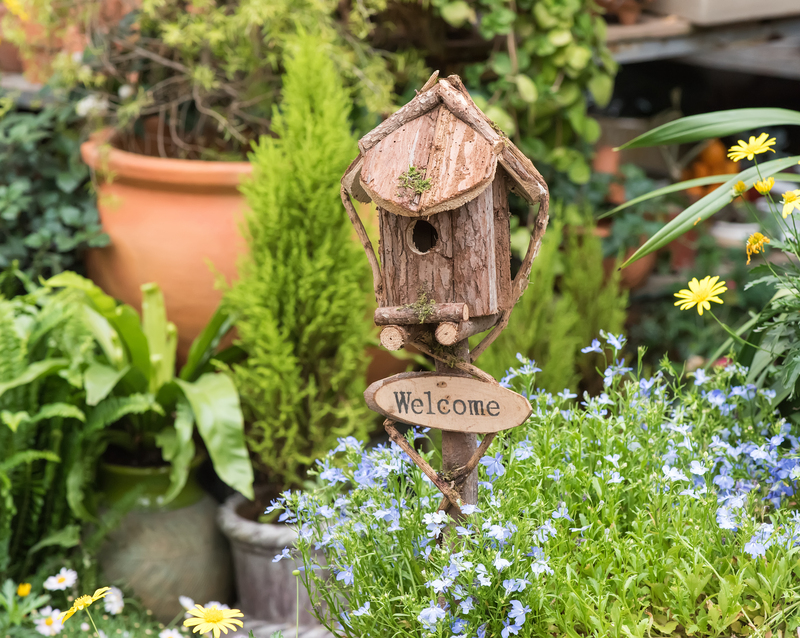Inventive Upcycling Projects That Are Good for the Planet
Why Upcycling Matters for the Environment
In today's world, environmental sustainability has become an urgent priority. One powerful, creative way to make a positive impact is through inventive upcycling projects. Unlike recycling, which typically breaks down materials into their raw components, upcycling transforms unwanted items directly into new, functional, and often stylish products. This approach not only reduces landfill waste but also conserves resources, saves energy, and can inspire a more eco-friendly lifestyle.
Let's dive into the fascinating world of upcycling, discover original project ideas, and learn how your creativity can help protect the planet!

What Is Upcycling?
Upcycling, sometimes called creative reuse, is the process of giving unwanted materials or everyday trash a second life by transforming them into something valuable. Unlike recycling (which often downgrades material quality), upcycling retains or enhances the quality of the item. Inventive upcycling projects capture the imagination, blending artistry with environmental care.
The upcycling movement is gaining momentum as more people seek creative, sustainable solutions for household waste, fashion excess, and more. From revamping old furniture to repurposing glass jars, upcycling makes sustainability achievable--and fun--for everyone.
Benefits of Inventive Upcycling Projects
- Reduces landfill waste: Reusing items prevents them from piling up in landfills, where decomposition can take decades or even centuries.
- Conserves resources: Upcycling cuts down on energy and resources required for traditional manufacturing processes.
- Saves money: Turning trash into treasure can help you decorate or organize your home for less.
- Enhances creativity: Upcycling projects let you express yourself and develop valuable DIY skills.
- Promotes sustainability: Every upcycled piece replaces a product that would've been manufactured new, reducing your environmental footprint.
20 Inventive Upcycling Ideas for Every Home
1. Upcycled Furniture Makeovers
Give old, tired furniture a new lease on life! With a little paint, some creative thinking, and minimal investment, you can transform vintage pieces into modern masterpieces:
- Pallet Coffee Tables: Restore and varnish used pallets to build chic coffee tables or stylish bookshelves.
- Drawer Planters: Repurpose broken dresser drawers as charming outdoor planters.
- Chair Swings: Convert outdated wooden chairs into whimsical garden swings for kids or adults.
Tip: Sand down any rough edges, and choose non-toxic paints for a planet-friendly finish.
2. Glass Jar Transformations
Glass jars from pasta sauce, jams, or coffee can become versatile containers or decorative pieces:
- Mason Jar Herb Gardens: Grow culinary herbs in painted or decorated jars to create a fresh and fragrant kitchen garden.
- Lanterns and Candle Holders: Paint and fill jars with candles or LED lights to add ambient lighting to patios or bedrooms.
- Bathroom Organizers: Use glass jars for storing cotton swabs, makeup brushes, and other toiletries.
3. T-Shirt and Textile Upcycling
Don't toss out old, stained, or outgrown shirts--turn them into eco-friendly home accessories:
- T-Shirt Tote Bags: Cut and sew old t-shirts into reusable shopping bags that reduce your need for plastic.
- Rag Rugs: Braid or weave old fabric scraps into colorful rugs for your entryway or bathroom.
- Pillowcases and Pet Beds: Stuff old sleeves or pants legs to make comfortable pillows or pet beds.
4. Creative Plastic Bottle Projects
Plastic bottles are a significant environmental problem, but inventive upcycling projects can turn them into lasting, purposeful items:
- Vertical Gardens: Cut and stack bottles on a wall or fence for a space-saving way to grow herbs or flowers.
- Bird Feeders: Convert plastic bottles into functional bird feeders, attracting wildlife to your outdoor space.
- Storage Solutions: Slice and join bottles to create compartments for office supplies, toys, or craft materials.
5. Repurposed Wooden Crate Solutions
Wooden crates are durable and offer a rustic, farmhouse-chic appeal. Here's how to upcycle them:
- Bookshelves: Stack and secure crates for creative shelving or storage units.
- Under-Bed Organizers: Mount wheels on vintage crates to slide them under the bed, perfect for shoes or seasonal clothes.
- Plant Stands: Arrange crates into custom plant stands or vertical gardens.
How to Start an Upcycling Project
- Start small: Beginners should choose simple projects like decorating jars or making tote bags from t-shirts.
- Gather materials: Collect household items destined for the trash or recycling bin--plastic bottles, jars, old furniture, pallets, textiles, and more.
- Plan your design: Sketch or research similar upcycling ideas for inspiration.
- Use safe, eco-friendly supplies: Opt for water-based paints, non-toxic glues, and repurposed hardware whenever possible.
- Share and inspire: Post your finished projects online or host a craft night to encourage others to explore inventive upcycling.
Upcycling Inspiration: Unique Projects from Around the World
6. Bicycle Wheel Clocks
Old bicycle wheels are transformed into one-of-a-kind wall clocks. Insert a battery-powered clock mechanism in the center and paint the spokes for a modern, industrial chic look.
7. Bathtub Sofas
Repurposed claw-foot bathtubs can be converted into quirky, comfortable sofas--complete with upholstery and cushions--for a show-stopping living room centerpiece and a conversation starter.
8. Suitcase Side Tables
Vintage suitcases, when attached to sturdy legs, make charming bedside or side tables with extra built-in storage.
9. Lightbulb Oil Lamps
Burned out lightbulbs are carefully cleaned and filled with oil to create delicate, functional lamps perfect for mood lighting.
10. Skateboard Shelves
Old skateboards become unique wall shelves, combining underground style with practical display options for books, plants, or collectibles.
Tips for Successful Upcycling
- Quality matters: Choose materials that are durable and safe for their new purpose.
- Clean thoroughly: Wash all bottles, jars, or cans before using them for crafts or storage.
- Think outside the box: Let your creativity run wild--sometimes the most unexpected items make for the best inventive upcycling projects!
- Combine materials: Don't hesitate to mix wood, textiles, glass, or metal in your designs.
- Share and teach: Upcycling is even more impactful when you involve friends, family, or your local community.
Upcycling and the Circular Economy
The concept of the circular economy is an eco-friendly model where resources are reused, repaired, refurbished, and given new life--keeping them out of landfills for as long as possible. Upcycling is a key part of this philosophy. When you choose to upcycle, you contribute to:
- Reducing demand for new raw materials
- Cutting down waste generation
- Encouraging responsible consumption
- Inspiring innovation for new products and designs
This shift can help mitigate pressing environmental threats, from resource depletion to pollution and climate change. Plus, inventive upcycling can even lead to new business opportunities--think local boutiques, Etsy shops, or community workshops built around sustainable creations.
Upcycling in Art and Education
Artists, educators, and environmentalists are embracing upcycling to teach sustainability creatively. Schools can run workshops on turning bottles into bird feeders or using textiles for patchwork projects. Art galleries now feature stunning exhibits of inventive recycled sculptures, demonstrating that upcycling has a significant cultural impact as well as an environmental one.
By making art from discarded materials, creative upcycling projects can raise awareness, start conversations, and inspire others to rethink their approach to waste.
The Future of Inventive Upcycling Projects
As the movement continues to grow, so do the possibilities for inventive upcycling. Modern technologies like 3D printing are making it easier to combine and repurpose unusual materials. Social media platforms connect creatives worldwide, accelerating the exchange of new upcycling project ideas. Communities and brands are also beginning to see the value of upcycled products, with sustainable design becoming a major trend in fashion, decor, and beyond.
The next generation of upcyclers--from schoolchildren to influencers and entrepreneurs--will play a critical role in shaping a greener, more sustainable world.

Getting Involved: How You Can Make a Difference
- Start with small, easy projects and work your way up as your skills and confidence grow.
- Join local upcycling groups or online communities to swap ideas and showcase your work.
- Host or attend upcycling workshops in your area to learn from others and spread awareness.
- Support brands and shops that prioritize upcycled products and sustainable design.
- Advocate for change by sharing your passion for upcycling with friends, family, and colleagues.
Conclusion: Small Changes, Big Impact
Inventive upcycling projects are not only fun and fulfilling, but they also have the power to make a real difference for the planet. By giving new life to old or discarded items, you conserve resources, cut waste, and inspire a culture of sustainability and creativity in your community. Whether you're transforming a glass jar into a lantern or building furniture from shipping pallets, every upcycling initiative helps build a better, greener future.
So, embrace the world of creative upcycling ideas. Take a look around your home, identify the potential in forgotten or unused objects, and get started with your next eco-friendly, inventive project today!
- Share your upcycling stories! Tag your creations on social media to inspire a global movement.
- Remember: Every inventive upcycling project is a small step toward a healthier, cleaner planet.
